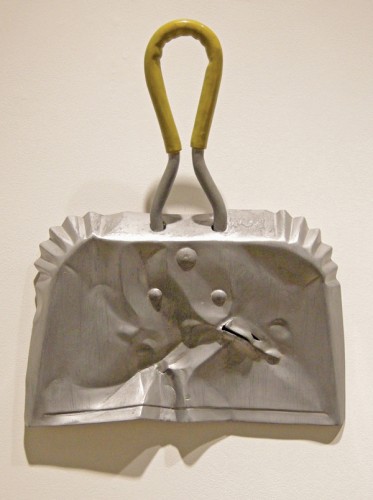Richard Haden: Carved Signs
RICHARD HADEN: CARVED SIGNS
To fully experience Richard Haden’s art, one must take a moment to suspend disbelief. It is difficult to grasp that the artist’s hyper-realist sculptures depicting urban discards are carved out of laminated blocks of mahogany and poplar. The sculptures are copies (with various artist edits) of real found objects. Dented and weathered objects such as a creased trash can lid, a punctured metal briefcase, deteriorating cardboard boxes and a corroded fire extinguisher reveal a history of use and trauma. Salvaged readymades are recontextualized and given a new life along with new possibilities of meaning. Haden’s wooden sculptures are meticulously painted with oils, enamel and lacquer in order to achieve the heightened sense of illusion. In the wall-based piece Panhandler, the artist has strikingly replicated the metal surfaces and glossy, colored handle of a battered industrial dustpan.
Upon first glance, the artist’s intricate process is not clearly revealed. Haden combines traditional carving techniques with methods and tools he has developed to map out and execute the working compositions. To visualize the various depths of the carved areas, a series of markings and a grid system, similar to topographical maps, are drawn first on the model and then transferred to the wood. The varied detritus, often collected by Haden along streets or in urban lots, is riddled with imperfections that inspire the artist, especially those objects possessing the potential for creating new visual rhetoric. It is through these sculptures that Haden brings to light issues of originality, artifice, waste, decay and the disposable nature of contemporary culture.

